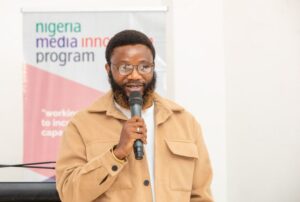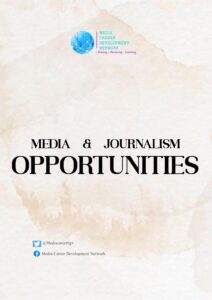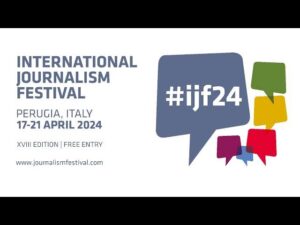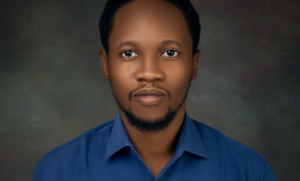Paper presented by Tunde Akanni at a media panel session organized by Turkish Nile University, Ufuk Dialogue Foundation and The Nation Newspaper in conjunction with the Lagos State University on Monday Jan 21, 2013.
Abstract
Unlike the two other presentations on this topic, this paper adopts the academic track. It will address the subject in question from three main perspectives. The first is the clarification of the key concepts namely reportism and conflict. This presenter would however seek the audience’ indulgence to simply translate reportism to mean the media, better still, media’s interface with conflict.
The second part of this presentation will focus on perceived media’s performance on the reportage of conflict leading to the intervention of scholars and practitioners to chart the better way for the future. This leads us to the inception of peace journalism otherwise referred to as conflict- sensitive journalism.
The paper then concludes with some recommendations for better coverage of conflicts by the Nigerian media a most necessary recipe for the stability of the nation’s democracy and allied structures.
Introduction
As we gather here today, a quick scan through the dailies can hardly miss reports of the hostage crisis now raging in Algeria, the war in Mali and the unsettling situation in the Democratic Republic of Congo to cite only three cases around the continent. Back home, as the Joint Task Force makes efforts to repress the Boko Haram rebels, the thieving forces in the Niger Delta have not ceased operations even as the kidnapping phenomenon is fast becoming a nationwide problem. Yet, only two days ago, The Punch newspaper reported the likelihood of the old wound of the 1999 Odi massacre perpetrated by Nigerian soldiers, being re-opened following the resort to court by Odi community to seek justice. The fact we seek to register here is that conflict situations make ready headlines any day. However, notwithstanding the fact that journalism has a standard checklist for quality news, reports deriving immediately from conflicts hardly do well enough to deepen the audiences’ understanding of the situations other than that they are kept posted on list of casualties, utterances of leaders of troops which often turn out to be sheer propaganda and so forth. The fact is that like every other professional practice that has grown and transformed in response to prevailing situations, the media still has so much to do to be supportive of humanity in conflict situations. We shall get to even appreciate this further in due course as we go on to clarify those concepts that make up today’s subject of discussion.
The Press
Of the celebrated nine tracks of diplomacy, communications and the media constitute one. The media in this sense- both print and electronic-are expected to dwell essentially in informing people to make good choices. Equally important is the need for them to avail the people ample platform for public debate and involvement on key issues. The media also help to mould public opinion by the information they make available and in turn are a vehicle by which public opinion gets aired. Decision makers in government often defer to public opinion as aired through the media and their decisions are affected by what they see, hear and read through the mass media organs. Interestingly, modern communications technology enables widespread access to information and opinion sharing, which has great potential for changing how decisions are made and how large groups of people act. (Diamond and McDonald, 1996).
Although the television and radio offer viewers and listeners immediate sight, sound and motion, newspapers provide a rather broad source of information that is readily available for use at any time (Wanta, 1997). Newspaper information reflects the content and order of priority in a permanent form. Its expanded role provides, for instance, models of strategic responses to diseases including HIV/AIDS (Pratt et al., 2002).
Diamond and McDonald however argue that the media or press is however often confronted by some challenges such as the dilemma of being seen to be proactive or being reactive. No less is the fact that conflict and violence readily make news than peace often perceived as less or non exciting (1996:124-125)
Conflict
Even the specialized publication on conflict studies, Thesaurus and Glossary of early warning and conflict prevention terms(Schmid, 2000) presents no fewer than 12 variants of definitions of conflict, related though in different respects. The term, said to originally derive from the Latin verb confligere, “refers to a confrontation between individuals or groups resulting from opposite or incompatible ends or means” In another breadth, it describes conflict simply as “contests, competitions, disputes, and tensions as well as manifest clashes between social forces”(Schmid, 2000:12). The definitions here appear to be sufficiently self explicit.
The Press and Conflicts
The media’s involvement with conflicts the world over has not been so much impressive and this according to Bratic, Ross and Kang-Graham (2008) is largely attributable to the fact that standard journalism practice itself is a victim of conflict. Isola (2010) states that contemporary journalism schools even make trainee journalists understand that an outstanding attribute of news is conflict. Not unexpectedly, this affects the conduct of journalists in the course of performing their duties either as reporters or editors.
Beyond the claim of Diamond and McDonald (1996), Bratic et al (2008) further note that several scholarly studies have submitted that the media are more likely to perpetuate violent conflict than contribute to its peaceful resolution. Resorting to history, they recall that news media have often been used to promote wars and conflicts. Citing Creel (1920) and Lasswell (1977), they recall the examples of how the media helped to further the goals of the Allies during the World War 1. They add that even as recently as for the Rwanda and Yugoslavia wars, the role of the local media in the promotion of violence was so dominant even as the western media with all their ubiquity were not able to affect the course of the escalating conflict. Moorcraft and Taylor (2007:49) sum it up thus:
“…correspondents do not need military officers to censor them or bend them to their will. In nearly all wars, journalists will tend to take sides, despite their vocation’s mission and their training. In wars of national survival, they will instinctively veer towards patriotism. In wars of choice, if they are embedded, they will usually subconsciously bond with their hosts. If they are freewheeling in conflicts such as Bosnia or Rwanda or Darfur, and many other wars to come, they may well consciously indulge in advocacy.
In line with the above submission, Bratic et al (2008) further note that scholars have observed that journalists are trained to construct news within a “story” or narrative form that employs an antagonist facing off against a protagonist, elements of engaged in dramatic tension, within a plot with the predictable elements of “a beginning, middle and end”. This form determines news in the dominant cultural narratives which reinforce the essentialist idea of a just or clean war against evil enemies while encouraging opponents to press perceived advantages, however insignificant.
The media, again, perform a structural role in daily economic and cultural relations in any society. Citing Wolfsfeld, Annabring and Spohrs, Bratic et al assert that journalism is another competitive business driven by profit. This explains its (journalism) event driven, drama seeking and conflict-oriented reporting. They reckon that a major question driving the practice, as in conventional merchandise is the “‘sellability’ of the product. The logic therefore is that since conflict is often accompanied by its own self recommending drama, it presents a better deal to the complexity of peace process. No less important is the fact that the round-the-clock working of the media readily lends itself to the reporting of momentary events making them ignore contexts and other details that may aid the audiences understanding of the issue being reported (Howard and Prentoulis, 2003). The pressure of deadline as well as the competition to be the first to break the big story stimulate journalists to focus on conflict trends rather than laying bare the details of what led to conflicts. At any given time, any available reporter may be dispatched to go and cover events including conflicts at a short notice. Such a reporter and even his editor may not have sufficient idea of the issues and events. The reporter in the course of the job would need to consult sources that may not be neutral even as he may use his own discretion to make choices of sources. Such sources may be may have sympathy for a particular faction within a group involved in the conflict in question hence the agenda of his preferred faction is what would be presented or better still promoted in the media interview he gives. In some other respect still, media organizations may find reports on some conflicts irresistible for publication but may not have resources to deploy reporters to the scene. They therefore end up relying on the reports of new agencies like AFP and Reuters laden with the biases of the social and economic interests of their owner countries. And these are organizations that are not infallible either. So what happens in the event of a discovery of slips and retraction by the original publisher?
This brings up the issue of media content and ethics. Unlike some other professional practices, journalism is not a strictly regulated terrain imposing standardized requirements on the practitioners as is the case with say, medicine or law. What serves as the major check for the practice is the professional ethics often self imposed and determined by individual’s sense of responsibility although there are recent efforts in this direction. Yet, journalists’ output impact most heavily on the general society. But then, for those who went through the formal training of the profession, they are made to appreciate the fact that certain qualities are fundamental to quality news. These include objectivity, balance, neutrality and fairness. Every report published by supposedly trained journalists is supposed to have these.
But to what extent is this possible, given the situations journalists encounter on the field especially while covering conflicts. It is therefore important to critically examine these elements of news quality against reality.
Schudson (1978) argues that reality and the knowledge of reality are both constructed and coloured by the journalist on duty. Objectivity is embedded within the social reality in which the journalist functions. In essence, objectivity, truth and impartiality are better reckoned with as relative and or theoretical imperatives supportive of journalism’s claim to independence. In truth, and from manifest developments in the media industry in Nigeria, the reality is that the environment of reporting is substantially affected by economic and political considerations not unconnected to media ownership, political interests and commercial patronage. What, with the rate at which journalists defect to political offices in the manner that betray their prior partisanship? Certainly, this may help to explain whatever may have been suspected as the bias or inclination of those concerned.
The principle of balance is closely related to that of objectivity. It describes a situation in which a reporter gives equitable space and time to different parties to an issue, preferably conflict to suit our purpose here. Reasonably this is related to ‘neutrality’ which again may be problematic as this could only be dispensed discretionally by the reporter who may be too weak to contain his bias. Meanwhile, hard as some other reporter may try, there really cannot always be enough time and space for every party to a story even as all the contacted sources may not be equally articulate for their respective sides. Indeed, what eventually gets aired or published may be the fallout of the sub-editor’s scissors in his bid to manage space and time in the face of stiff competition among stories. Still, the reporter’s effort to achieve balance may be at variance with the expectation of the bulk of the audience rendering him ‘unfriendly’ or worse still ‘unprofessional’ to the sometime hastily judgmental audience. For example trauma reporting is one task that calls for great caution on the part of the reporter. But how much justice would a reporter have been perceived to have done saying so much about the accomplishment or losses of one side and less of the other? Yet, basic journalism ethics recommends that unsightly or obscene scenes be moderated even as audiences should be forewarned before being ‘served’ with them.
Peace Journalism
On account of the unnerving global concern that conflicts constitute it became a matter of concern to journalists, scholars and other stakeholders. To them then, what existed until then was war journalism (Galtung, 1977) as opposed to their preferred alternative of peace journalism. Foremost in the campaign was the renowned conflict resolution studies expert, Johan Galtung. He took up the challenge of outlining a corrective approach to conflict coverage. According to him, peace journalism presents a clearly distinct model different from what war journalism had availed the world which was largely a systematic focus on “violence and who wins, like a soccer game, leaving out the invisible effects and the alternatives”(Galtung, 2003). Peace journalism proponents Lynch and Mcgoldrick, (2005) also describe war journalism as through a focus on overt acts of violence and on the most prominent hardship that a nation faces. While noting that the tendency of war journalism is to await and follow violent tragedies in particular, they further observe that it uses classic bureaucratic, formal expressions emphasizing external point of view. They argue that these convey a kind of call to duty from an informed, learned authority. Peace journalism reverses all of these.
In contrast, Howard (2002) says peace journalism, rather than being momentary, does not limit its role to any particular stages of conflict but includes news through all stages stretching through pre-, during and post conflict. While it reckons that conflict abounds in all communities, it does not reckon that violence is the natural result of conflict. As a marketplace of ideas, the media, as presumed by peace journalism are in a position to constructively transform conflict away from violence by expanding the number and diversity of individuals whose ideas and perspectives are shared, given credibility and valued. While insisting that violence itself is the problem, peace journalism practitioners strive to systematically reject the simplistic approach to violence often attributing the cause to “a certain party (‘the others’) as “the problem” (Hanitzsch, 2004, p.485). Rather, peace journalism takes on conflict formations by identifying the parties, goals and issues involved from ethnic, historical and cultural perspectives. In other words, Lynch and McGoldrick (2005) explains, the ultimate goal of peace journalism is to make better for all parties, the possibility of sharing views as a means of finding better ways to transform or resolve violent conflict. Peace journalism concerns itself with contexts, backgrounds and the broad, negative consequences of violent conflicts, as it explores alternatives and solutions. Peace journalism enhances information flow and opens the range of options for addressing conflict. Its concern is a win-win strategy which declines simplistic binaries such as good/evil and right/wrong. Concisely, Galtung (Transcend, 1997) posits that peace journalism is deeply invested in careful and detailed examination of peace, people and solutions.
Although apparently harmless and seemingly deriving from the consensus of concerned scholars and media professionals, what appear to be agreeable submissions on peace journalism did not go without criticism. Described as naïve, biased and impractical (Bratic…) some other critics still argue that it is a “prescriptive orthodoxy (that)… abandons good journalism (Lyon, 2007) and fails to recognize audience desires, owner prerogatives for profits and human frailty. According to this school of thought, peace journalism abandons the search for truth advanced through balanced, objective reporting without acknowledging the practical limits of time, talent and energy and without providing mechanisms to facilitate effective gathering of credible alternative information. Hanitzsch (2004) thus faults peace journalism as “a programme or frame of journalistic news coverage which contributes to the process of making and keeping peace”. Indeed, Kempf (2003) is credited with the “de-escalation oriented coverage” which transcends the professional norms to the extent that journalists’ increased understanding of conflict theory seem to influence conflict coverage that that provides for peaceful settlements. His approach requires media to reframe conflict as a collaborative process. For Lynch and McGoldrick (2005) and Spencer (2004) journalists are “full and active participants in contestations and dialogues about peace” (p.604) affecting events they report beyond gathering and delivering information. If Kempf, Lynch and McGoldrick are not so conspicuous with their bias for journalism with advocacy bent, Galtung (2000a, 2000b &2002); Botes (1995) and Chilton (1987) make bold to be unequivocal. Also in league with Galtung and others is Astorini-Courtois (1996) whose stance is that media should play a proactive role in marketing peace by identifying publicly salient attributes of peace and seeking points of accord among conflicting parties. More strikingly, Gorsevski (1999) prefers media “propaganda of peace making”, Melone, Terzis and Ozsel (2002) outrightly declare that the media should not and “cannot be neutral toward peace”. In like manner Howard (2002) urges journalists to go “beyond the traditional disengaged journalistic role” (p.9) to become more proactive as peace facilitators or “conciliators in the field”. These positions were supported in subsequent studies carried out later which also informed new journalistic training programmes. According to Lynch cited in Bratic et al (2008), such re-training involves no radical departure from contemporary journalism practice. It only needs a subtle shift in sourcing and narrative choice. In other words, it would require “a shift toward citizens and away from elite spokespeople, toward the value of peace rather than the adrenalin rush of conflict, toward mutual benefits rather than unilateral victory”. (Bratic et al, 2008)
Writing in Transcend Media Service (an initiative of Joan Galtung) Lynch recalls that peace journalism has since 1990s emerged as a new trans-disciplinary field of interest to professional journalists across continents including developed and developing countries. It has equally reached civil society activists, university researchers and others interested in the conflict-media nexus. In it, he states, are a set of practical designs for editors and reporters and a basis for developing evaluative criteria for the critical analysis of war reporting. All of these derive from propositions about conflict, violence and peace from Peace and Conflict Studies. It has since involved extenve interactions between peace and conflict scholars including himself and Galtung leading to publications a pioneering one being Reporting to the World.
UNESCO also chose to move boldly against it with some intellectual efforts that it could mobilize. This culminated in a publication titled: Conflict-Sensitive Reporting: State of the Art/ A Course for Journalists and Journalism Educators. The report undertakes what can be described as a descriptive and prescriptive effort. It acknowledges that violent conflict is becoming increasingly lawless and terrifying as it exposes civilians and resources to exploitation by poorly trained soldiers or paramilitary forces or private armies. State authorities, the report adds, are weak or collapsed. Even as the low-intensity violence recurs erratically, “the news media, with its new technologies and wider reach, is increasingly a target for misinformation, manipulation or suppression by interests seeking to profit from the violent conflict.” The report argues that nothing more clearly confirms the relationship between the news media and violent conflict than the contradiction between the converse proportion between the number of dying journalists and the number of conflicts around the world. Journalists are increasingly targets of war-mongers because of the media’s potential to influence the course of conflict resolution. Equally worth noting is the fact that, like the coverage of the environment which is the twin issue in the Niger Delta, existent journalism curricula in colleges and universities have little or no relevance to conflicts even as there has always been a generalist component called Specialised Reporting. Not even the acclaimed “reporters’ bible”(Interpretative Reporting) by Mcdougall (1977) lists conflict as deserving any special attention. But UNESCO has since recognized the imperativeness of this: “In today’s increasingly changed environment of conflict, more and more journalists find themselves ill-equipped to address the issue which demands so much of their attention and is devastating their community”(Howard, 2009:3). More specifically, in 1978, the Mass Media Declaration of UNESCO, Article 3 asserts that the mass media have “an important contribution to the study of peace.” Also, the International Principles of Ethics in Journalism adopted in the 1983 UNESCO consultative meeting of journalism organizations states that a “true journalist stands for peace, democracy, human rights… and participates actively and contributes through dialogue to a climate… conducive of peace and justice everywhere”(Howard, 2009:9). According to Howard, these declarations derive from previous imperfections which journalists in the West admitted even as they postulated that what seemed to be the inadequacy may not have been intended arguing that they were obliged to remain disengaged.
By the turn of the 20th century, the issue received more attention from more journalists, academics and analysts.
Recommendations
From the foregoing, it has been established that basic journalism training skills manifest in conventional journalism practice may not be enough for conflict reporting. Rather, reporters and editors should strive to seek better understanding of conflicts. Here we wish to recommend to journalists involved in handling and managing stories deriving from conflict to subscribe to the helpful UNESCO guide for being clearly all-encompassing. It, for instance, counsels that journalists should endeavour to confirm a basic understanding of news media roles and generally recognized essential standards of practice for professional journalists. While urging journalists to appreciate opportunities and constraints in reporting comprehensively on conflict, they should also be conscious of specific problems and possible solutions confronting conflict-sensitive journalists. UNESCO further adds that journalists should understand different patterns of conflict resolution and recognize elements of the process such as demands and needs and shared interests(http://unesdoc.unesco.org/images/0018/001869/186986e.pdf accessed January 19, 2013)
References
Galtung, J. (1969) Violence, Peace and Peace Research. Journal of Peace Research, 16(3): 167—91
http://unesdoc.unesco.org/images/0018/001869/186986e.pdf accessed January 19, 2013)
(http://ajs.uwpress.org/cgi/content/abstract/30/2/175 retrieved Jan 24
(http://www.eraction.org/component/content/article/141, last accessed, March 10, 2011.
http://www.imtd.org/at-a-glance/mission/working-methods/what-is-multi-track- diplomacy/
(http://www.mosop.org/about_us.html, last accesed March 10, 2011.
Ibaba I (2005) Understanding the Niger Delta Crisis. Port Harcourt. Amethyst and
Colleagues Publishers
Igwe, I (2009) The Media and Niger Delta Crises: Implications for Democratic Stability in Nigeria. In Goroms, G J, Conflict Management and the Media in Nigeria. Kano. Centre for Research and Documentation
Microsoft ® Encarta ® 2009. © 1993-2008.
Schmid A P (2000) Thesaurus and Glossary of Early Warning and Conflict Prevention Terms. Leiden. Forum on Early Warning and Early Response.




